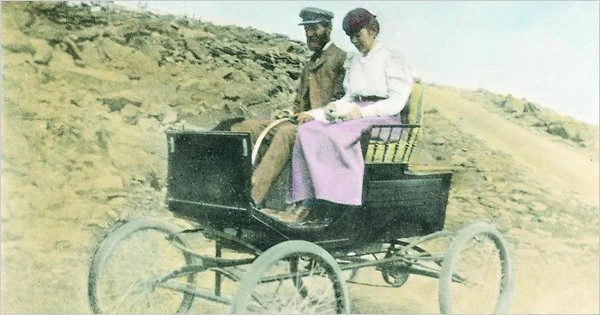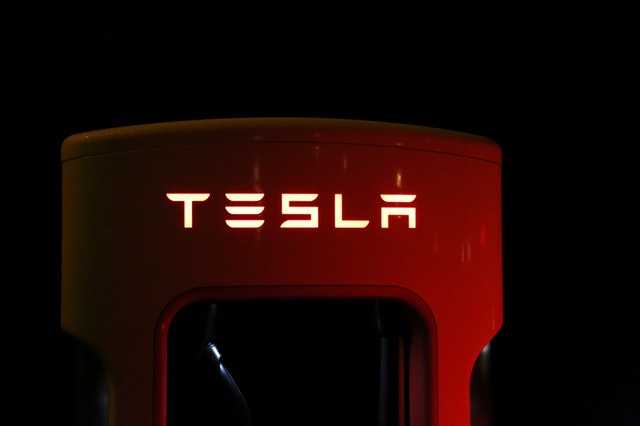Sustainability/Green
The Ford CEO’s EV Road Trip Reality Check

Well, kudos where kudos is due. I came across an automotive news story recently that was too good not to pass on. It’s always good when you read of the CEO of any company getting out of their ivory tower or glass-walled office to get their hands dirty and/or do a bit of road-testing for themselves rather than letting those in the lower echelons do it. That’s exactly what happened recently in the case of Jim Farley, the CEO of Ford in the USA.
Ford USA has been putting a fair bit of R&D investment into the upcoming electrical ute, the F-150 Lightning (not yet available in Australia at the time of writing, but we can keep our fingers crossed). Now, the idea of this vehicle was that it was supposed to be for rural types in rural areas. The idea was to make the sort of thing that belongs in a Country and Western song: the trusty old pickup that can handle dirt roads. However, instead of just leaving things to the developers and the number-crunchers and the sort of people who test battery life and performance under ideal conditions, Mr Farley decided that the best thing to do was to pull a Bertha Benz and take the new vehicle out on the road, partly as a real-world road test and partly as a publicity stunt.
And if you’re going to go on a high-profile road trip across the United States, there’s only one road that springs to mind (hint: it’s not the Pan-American Highway). Yes, Jim Farley headed out in the all-electric Ford F-150 Lightning on the legendary Route 66. Naturally, he posted the highlights of his trip on social media, specifically on Linked In and on Twitter or X or whatever it’s calling itself today. Yes, the fact that the Ford CEO documented his experiences with this ute that’s specifically designed to be a rival to Tesla’s Cybertruck on the platform owned by the CEO of Tesla is deliciously ironic (but I guess it’s proof that Musk is serious about the no censorship thing – so kudos to him as well).
The F-150 Lightning behaved itself nicely on the road, but there was one issue that Mr Farley described as a “reality check”: charging times. Not that he ran out of zap or anything like that, but one thing he found was that when he came to some of the more popular charging stations, all the really fast superchargers were taken up, so he had to plug in to one of the slower ones. He reported that it took him 40 minutes to get to 40% charge, and he acknowledged that this is a “challenge” faced by customers. Superfast charging was great, he found, but the slower chargers, not so much. And, being in the position to do something about it, it looks like plans are afoot to improve the charging infrastructure in the USA.
It would be interesting if someone would do a similar road trip here in Australia. It should include the Great Ocean Road, but as that’s only 240-ish kms long, perhaps the Big Lap on Highway 1 would be a real test (give us your suggestions as to what would be a good test in the comments). Do we have suitable charging infrastructure here to ensure that road trips for business or pleasure – to say nothing of everyday driving – is smooth and efficient? Perhaps we’ll find, like those in the US, that perhaps we don’t have the infrastructure in place to go all-out electric (to say nothing of the ability to generate electricity). After all, EVs are only part of the equation when it comes to cutting down or cutting out fossil fuels, with biofuels and hydrogen being the other pathways that don’t seem to be quite getting enough attention.
However, the longer charging times weren’t all bad. One thing that Mr Farley reported was that there seemed to be something of a community of EV drivers gathering around the charging stations, and perfect strangers would start talking to each other in the time spent waiting for (a) a free charger and (b) the battery to charge. It’s like the car and the shared need created a connection and introduced people. If you’ve got a motorbike, you’ve probably experienced something similar even at petrol stations: other bikers (and former bikers and those who admire bikers) will start chatting. If there’s one thing that we learned during the Covid lockdowns, as well as washing our hands properly, it’s that in-person connections are important. Perhaps the enforced waiting and slowing down of EV charging stations will be good for humanity at a psychological level… or perhaps I’m being idealistic here, as it could equally lead to frustrations and the opportunity for entitled people to show their worst sides.
The Stanley Steamer
Now that electric cars are becoming more popular, and there’s talk about hydrogen fuel cell vehicles, our attention has been turned to what’s powering our cars. In this context, it’s interesting to one of the solutions used in the past as an alternative to petrol or diesel power: steam.

A good friend of mine, during a discussion on fuels, EVs and similar topics, wondered whether steam could be used to drive a car. I was sceptical, but it turns out that I was wrong. A little over 100 years ago, steam-powered cars were indeed a thing. They aren’t just a steampunk fantasy, as I had thought.
One of the most popular type of steam-powered cars was invented by the Stanley twins in the USA at the end of the 19th century. Bizarrely, F.E. and F.O. Stanley also invented one of the first photographic airbrushes, as they started their business ventures in the area of photography. However, automobiles were a lot more interesting, and they started the Stanley Motor Company in 1902 after an earlier attempt with a company known as Locomobile.
At that time, many internal combustion engines that ran on petrol or diesel needed a crank to start them up. These cranks were tough to turn and required a fair bit of elbow grease. They could even be dangerous, as if the car backfired while someone was cranking it, this could leave the person doing the cranking with a broken arm. However, the Stanley Steamers used gasoline (petrol) to generate a good head of steam, which provided the power to turn the wheels, and they didn’t need cranking. Stanley Steamers were designed with safety in mind, as they had a system in place to prevent the boiler from exploding if too much heat and pressure was generated.
For its time, the Stanley Steamer had some fairly impressive specs. It was a rear wheel drive affair, and didn’t require a transmission or clutch system, meaning that they were easier to drive. The power output varied depending on the engine type. The basic model (the compact engine) could deliver 7.5 kW. Two twin-cylinder engines were developed, the smaller one (3¼-inch bore and 4¼-inch stroke) also put out 7.5 kW, but the larger one (4-inch bore and 5-inch stroke) delivered a massive 15 kW.
For its time, the Stanley Steamer was quite fast. In fact, a customised version of the Stanley Steamer known as the Stanley Rocket Racer became the holder of the world land speed record for automobiles over a mile, clocking up 204 km/h in a trial at Daytona. This record stood for five years, and remained the best time over a mile for a steam-powered car until 2009.
As time went by, the Stanley twins refined their design, switching to lightweight aluminium bodywork and features such as condensers that harvested the steam so that the range of the water tank could be extended.
However, the makers of cars with internal combustion engines managed to find an alternative to the crank: the electric starter motor. This meant that the drawbacks of cranks were no longer, and the Stanley Steamer lost its biggest attraction, especially with the rise of cars produced via mass production and sold cheaply, Ford being the best known example of these. The Model T cost less than a quarter of the price of the Stanley Steamer and the engine of even the base model, which ran on petrol, kerosene or ethanol (now, that’s an idea worth revisiting), had the same power output as the best of the “Flying Teapots”, as the Steamers were known.
Given the stiff competition from the internal combustion engines inside the Model T and similar vehicles, things didn’t look good for the Stanley Steamer. Eventually, after one of the twins died (in a car crash, of all things), the company went under, ultimately closing in 1924.
The Stanley Steamer wasn’t the only steam-powered car in existence. Others have been made and sold, especially the Doble, and the idea has come back now and again over the past century or so, especially given concerns over pollution and the availability of fuel. Saab had a go at making a steam car in the 1970s during the fuel crisis of that decade (the project failed, unfortunately). An Australian inventor and enthusiast named Ted Pritchard tried to develop one in the 1960s and beyond and had some success. Until he died in the early 2000s, he was pushing for the use of steam-powered cars.
External combustion engines (which is what a steam engine is) aren’t as efficient as ICEs but they produce a lot less pollution, as they don’t burn as much fuel. They are heavy, thanks to the need for a strong boiler and a water tank. They can accelerate quickly once they’ve got a good head of steam up, but they do need a fair bit of time to boil and let the pressure build; this is one of the things that experimenters wanting to bring back the steam car try to work on.
And what about the future? Given the push towards vehicles that are less dependent on petrol and diesel, will we see attempts to make the steam car come back again? Electric cars have made a comeback (and how!), so perhaps steam will do the same.
What Is Synthetic Fuel?

You’ve probably heard that the way that the oil and gas fields that produce the petrol and diesel we put in our internal combustion engine (ICE) cars were once ancient forests that were somehow buried and transformed into the form they are in today. You may have wondered whether it would be able to make something chemically identical to crude oil or refined oil in the lab, given that we know the chemical formula for petrol and diesel.
Well, you aren’t alone in wondering whether that could be possible. The truth is that it is possible to make petrol and diesel artificially in the lab without taking the aeons of time involved in fossil fuels. The result is called synthetic fuel or synfuel.
Synthetic fuel differs from biofuels such as ethanol because it is designed to be completely chemically identical to ordinary bog-standard fossil fuel petrol. This means that it can be used as is in a car with an unmodified internal combustion engine without being blended, which is what happens with biofuels (you know – E10 is 10% ethanol and 90% fossil fuel petrol).
Synthetic fuel is nothing new. In fact, the idea of making petrol for cars (and planes) from something else was tried successfully back in 1930s Germany, except that they used coal as their starting feedstock. This was one reason why the German army was such a threat during World War 2: they could manufacture their own synfuel out of coal, which they had, rather than relying on oil wells overseas and the associated supply chain. However, this method is unlikely to be used these days, as coal is still a type of fossil fuel and wouldn’t suit the purposes.
The process of making synthetic fuel or synfuel starts with the very common gas hydrogen. The hydrogen is then combined with carbon (carbon monoxide) to make syngas (chemically identical to natural gas but made artificially). This is where the exciting part of synfuel comes in, as the process can either take the carbon from some source or it can even capture the carbon out of the atmosphere. This means that when the synfuel is used in an internal combustion engine, the carbon is just going back into the atmosphere where it originally came from rather than adding new carbon. (OK, you could argue, like one of my relatives does, that what’s in fossil fuels was originally in the atmosphere when that ancient forest was green and growing, but that’s another topic and another debate altogether that I won’t get into here.) Anyway, syngas is made up of hydrogen and carbon molecules (it’s a hydrocarbon, as opposed to a carbohydrate) and can be messed about with to make different types of fuel, including petrol.
The three main ways of producing synfuel are biomass to liquid, power (or electricity) to liquid and sun to liquid.
The biomass to liquid process uses organic matter as a feedstock, which provides the hydrogen and the carbon. This organic matter doesn’t have to be an oil-producing crop, which is what happens with some types of biofuel. Instead, agricultural waste matter can be used as a feedstock, as can domestic waste. In fact, if the idea of synfuel catches on and becomes more widespread, they’ll be able to use what’s in the landfills and what we chuck out. This avoids the problem of deciding whether good crop-producing agricultural land should go to producing an oil crop to power internal combustion engines or to producing food. This type of synfuel can be referred to as biofuel, although “biofuel” is a confusing term that covers ethanol as well as biodiesel, so it’s best avoided.
Power to liquid production produces the type of syngas known as e-fuel. In this process, electricity (which can be generated by renewable means, such as wind or solar) splits a water molecule to get hydrogen and oxygen, and the hydrogen is then combined with carbon from the atmosphere. The main byproduct is oxygen, and if the process can use renewable sources of energy, then it’s as close to carbon neutral as petrol can be.
Sun to liquid production is less common. In this process, a reactor catches the heat energy of the sun (not photovoltaic energy or solar power) and uses that energy to convert water and CO2 into syngas.
I think it’s highly likely that synthetic fuel is going to become more common, as a lot of us know that ICE vehicles suit our lifestyles and needs best (tradies, for example), who can’t afford to take large chunks out of their working days to recharge, travel a lot and need something that will take all the gear needed for their work. This is because Formula 1 racing is planning to use it to power all its ICE racing cars, hopefully by 2026. We’ve seen a lot of technology that started off in the racing world making its way over to general use, so let’s keep our fingers crossed. In addition, Porsche has bankrolled a synthetic fuel plant in Chile that uses wind power and the power-to-liquid method. This opened at the end of last year (2022) with plans to produce 11,000 barrels of synfuel this year.
Given that Australia has a lot of sunshine and the potential for using it for either the sun-to-liquid or the power-to-liquid process (with the help of solar panels), it’s not surprising that they’re setting up a plant in Tasmania (funded by Porsche again), which is due to kick into action in 2026. Watch this space!
What to Look for When Buying an Eco-Friendly Car
With emissions concerns becoming an ever-growing concern among new car buyers, many motorists are turning to eco-friendly cars in the hope they not only reduce their carbon footprint, but also lower their operating expenses as well.
As motorists start to see a wider range of eco-friendly cars pop onto the market, consumer choice has been broadened significantly, even if still some way behind internal combustion engine (ICE) vehicles.

Hybrid vehicles
Hybrids offer the best of both words as far as petrol and electric. The general notion is that the car will switch between the two systems in order to maximise efficiency.
For example, when the car is stationary, accelerating or driving at a low speed, the electric engine will kick in. While cruising at a higher speed, however, the petrol engine starts to take over and power the car. The petrol engine can also recharge the battery itself, which means you don’t have to be sitting at home or a designated charging spot waiting to recharge your car before setting out on your journey.
Electric vehicles
Meanwhile, electric vehicles are starting to see their penetration increase just like hybrid vehicles did a few years ago.
EVs rely exclusively on battery-power and charging, which has been a deterrent to many because of the limited range and infrastructure to cater to this. At the same time, charging points at home aren’t necessarily as economical as one might hope in this day and age. But both of those factors are improving.
Improvements to the range of electric vehicles have allowed them to drive further than previously possible. Long gone are the perception surrounding the limited driving ranges of first-to-market EVs. However, despite potentially lower ongoing running and maintenance costs, EV purchase prices have yet to truly become accessible to the mainstream consumer.

What to keep an eye on
One of the key measures as to how eco-friendly or green a vehicle is based on their emissions output.
Hybrid vehicles are still associated with emissions because of their dual functionality, while electric vehicles may also be tied to some emissions where the source of electricity charging the vehicle is not renewable. For example, one might argue that coal-generated electricity defeats the point of an EV.
The ratings for emissions outputs also vary in the real world compared with in lab or track testing. It’s one thing for manufacturers to spruik certain numbers based on ‘perfect’ conditions, however, outside of that bubble we all know that things are never quite the same in the real world.
Let’s not also forget that, ‘Dieselgate’, one of the biggest controversies in the motoring industry related to such discrepancies, even if related to diesel-powered vehicles.
Last but not least, uptake for both hybrids and EVs is a gradual process at this stage. Prices are still elevated, particularly when compared against other international markets where these vehicles have yielded greater uptake.
A large part of that is attributable to government policy and support, however, for motorists looking to make the early switch, there are benefits associated with lower operating expenses, but one must ensure they can afford to purchase or finance what are dearer vehicles to begin with.